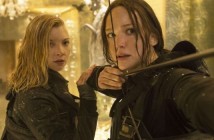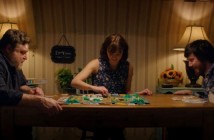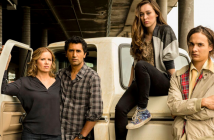Cast: Daniel Radcliffe, Janet McTeer, Ciarán Hinds
Director: James Watkins
Country: UK | Canada | Sweden
Genre: Drama | Horror | Thriller
Official Trailer: Here
An old foreboding mansion, scary noises in the dark and ominous looks from the local townsfolk; these are the essential ingredients in making a classically gothic horror film. In The Woman In Black, all of these elements are laid on as thick as imaginably possible, reminiscent of the early works of Mario Bava. It’s a spooky clash between the world of superstition and the world of logic. Like most ghost stories, the scientific world crumbles to its knees, bowing to the unknown forces lurking just behind the door, out of reach of studious scrutiny. It’s about he fear of the unknown and its infinitely terrifying possibilities.
It’s a spooky clash between the world of superstition and the world of logic.
Daniel Radcliffe plays Arthur Kipps, an emotionally tormented man who recently lost his wife. Once again, we are treated to a healthy dose of gothic. His role in the film is similar to that of Nicole Kidman’s in the exceptionally eerie The Others. Both actors portray troubled characters that recently lost their significant other and spend most of the movie slowly plodding through a haunted house with a look of horror on their face. That’s not meant to diminish either of their performances as Radcliffe does a fine job uncontrollably shaking candlesticks for fear of what he’s about to see.
Now comes a note about the film’s troublesome tonal clash. On one hand it’s classy classic and on the other it’s filled with some pretty cheap scares and lackluster ghost gags. One that comes to mind immediately is a scare involving the impossibly load flapping of a bird that darts in front of the camera. Okay, we’ve seen that scare many times before. It only becomes truly absurd when it’s used twice in one scene. I’m a big fan of a well orchestrated jump scare, but this, like most of the scares, seemed thrown in and out of place, almost like an afterthought. The mix between exhilarating jumps and the carefully constructed gothic atmosphere has a hard time fitting together. They send mixed messages to the audience. One depends on the audience seriously buying into the story, the other suggests a sense of silliness and fun, at least when the jumps are this cheap. Both tones in the film work against each other, preventing either of them from being fully realized.
As the film progresses, we slowly understand how the ghost is dangerous, but that comes way too late. After all, we don’t learn the videotape can kill you halfway through The Ring; it’s front and center.
A good early chunk of the film is spent with Radcliffe’s character at the house encountering spooking threats. The problem is that the film hasn’t yet established the rules of the spirit world. In the first scene of A Nightmare On Elm Street, the audience learns that when you’re slashed in a dream, those cuts remain with you in reality. The next time a character dreams, the audience understands what’s at stake. In this film however, we don’t really ever learn why or how the ghost is a threat to Radcliffe, it just seems to want to shriek at him. It’s startling, that’s for sure, but if the malicious intent of the ghost is only to give Radcliffe a fright, that’s not much of a threat. As the film progresses, we slowly understand how the ghost is dangerous, but that comes way too late. After all, we don’t learn the videotape can kill you halfway through The Ring; it’s front and center.
Without giving away the ending, the film takes a similar road as Insidious, where the mystical unknown is significantly demystified. It worked in Insidious because the answers simply lead to more questions, keeping the overall terror alive. In this film however, the ending makes you feel safe and reassured about the mysteries of death. I don’t know about you, but the last thing I want from the ending of a horror film is a warm hug. They have sappy dramas for that kind of thing.
[notification type=”star”]55/100 ~ MEDIOCRE. The ending makes you feel safe and reassured about the mysteries of death. I don’t know about you, but the last thing I want from the ending of a horror film is a warm hug.[/notification]




